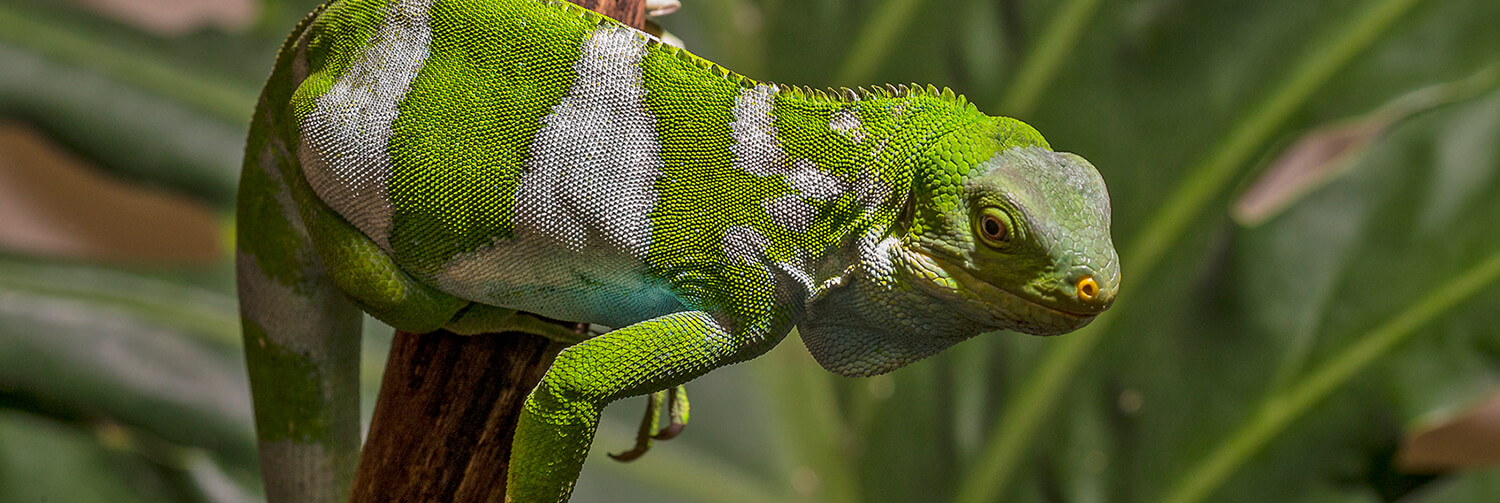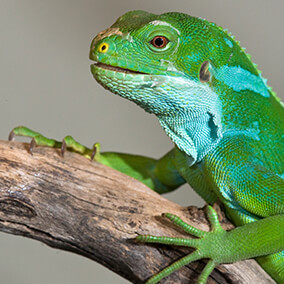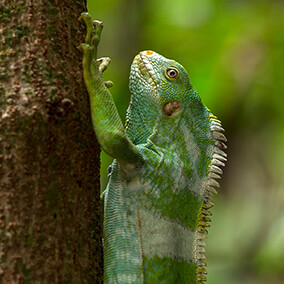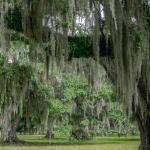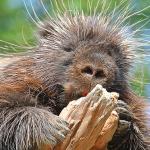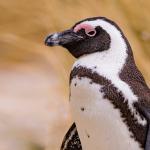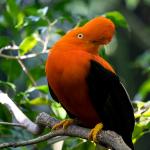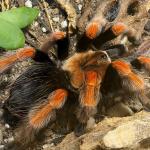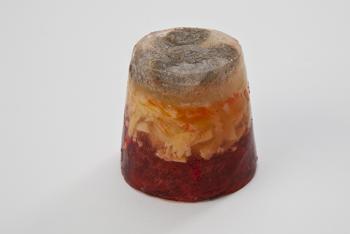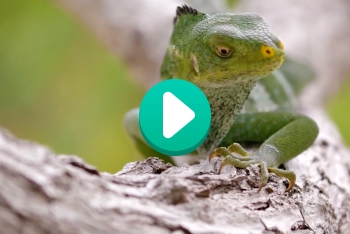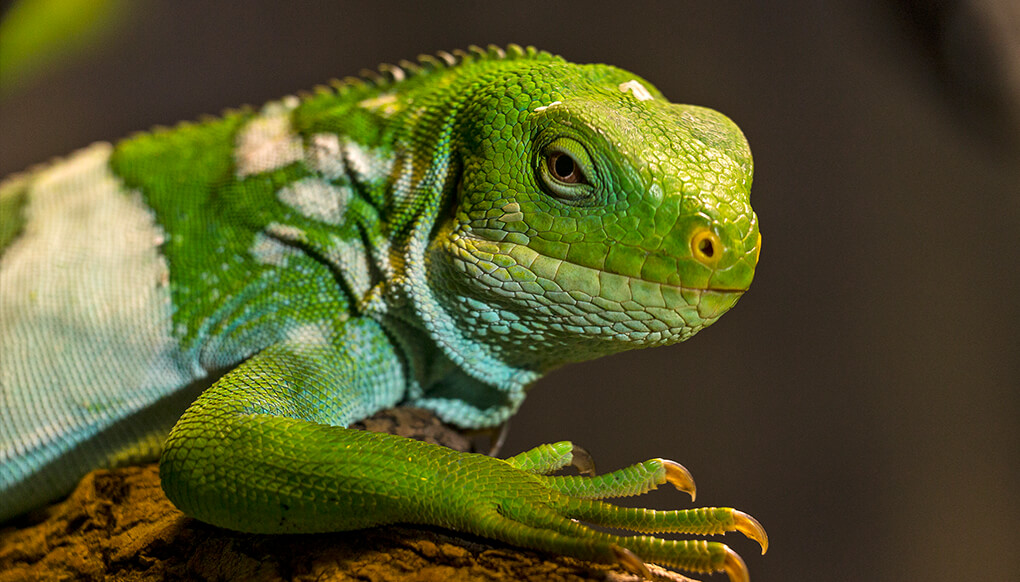
Fiji iguana
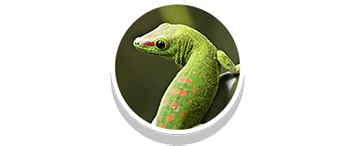
Reptiles


Endangered
facts


description
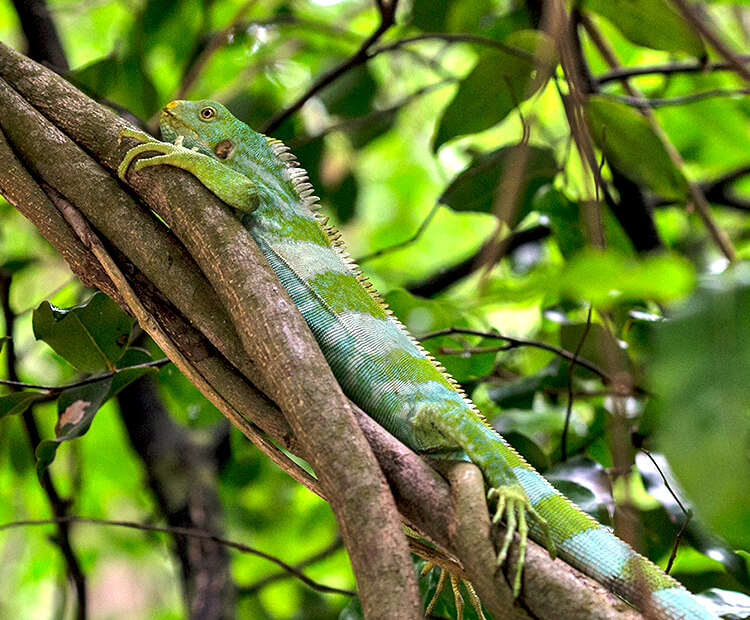
Color me camouflaged
Found on the islands of Fiji and Tonga, this tropical lizard’s bright blue and green colors keep it camouflaged in the treetops where it usually spends most of its life. It grips tree bark with its long, spindly toes and sharp claws as it scurries from one branch to the next in search of food.
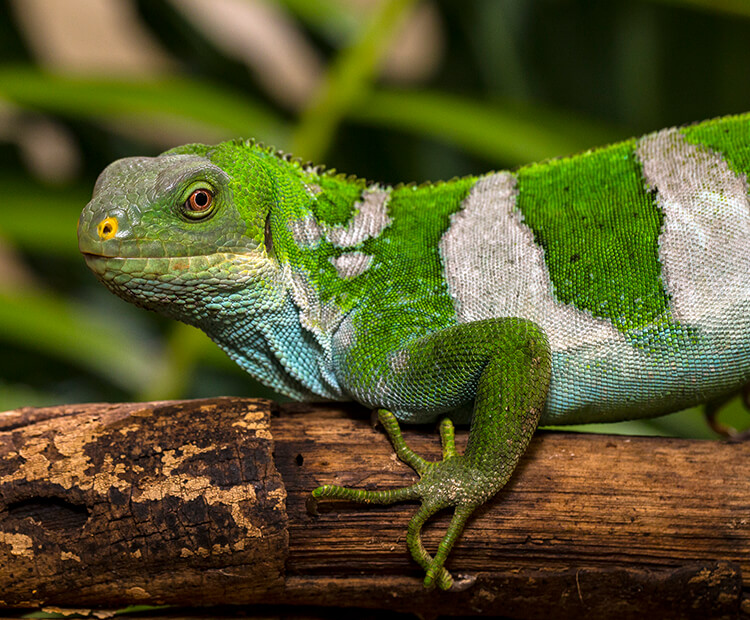
Catching some rays
Fiji banded iguanas feed during the day. In between meals, they bask on branches in the sun. Like most lizards, these iguanas are able to make their skin darken when exposed to the sun. The dark color absorbs more of the sun’s rays, which helps the iguana warm up more quickly.
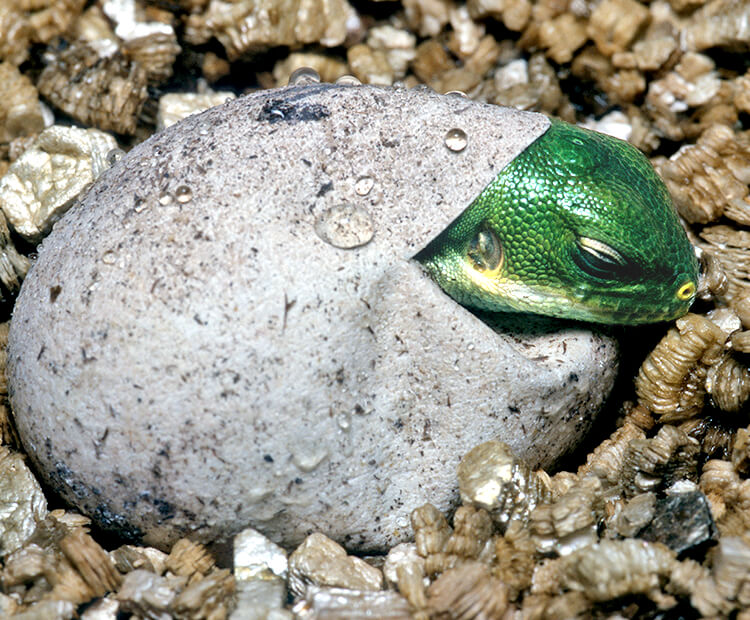
Impressive nests
Female Fiji banded iguanas leave the treetops to lay eggs. First, a female uses her feet and jaws to dig a nest just a little longer than her body. After she lays 3 to 6 small eggs, she covers them with soil and leaf litter and pats the top down with her head. Then, it’s back up into the trees. When the eggs hatch, the little iguanas must find their own food and a safe place to hide.

